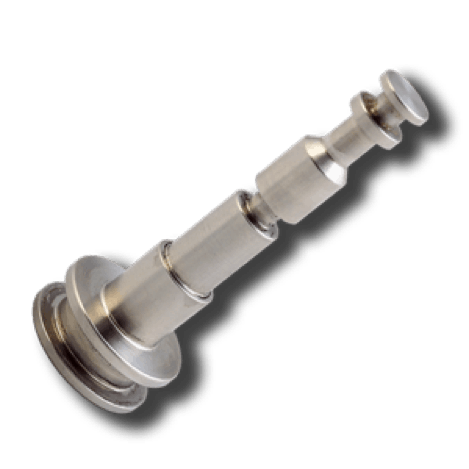Difference Between a Mill and a Lathe
The variety of modern manufacturing machines can be overwhelming. This article will focus on two of the most common categories of machines and compare the uses of a mill versus a lathe. These machines are subtractive manufacturing workhorses and are available in many different configurations.

What is a Lathe?
A lathe manufactures cylindrical parts by spinning the material against a fixed tool. Using a lathe to create a part is called turning. The raw stock material is secured in a chuck which is spun at a high rate - this rotational axis is called the C-axis. A lathe's cutting tool is mounted on a tool holder that can move both parallel to the C-axis (denoted as motion along the Z-axis) and perpendicular to the C-axis (X-axis movement). On CNC lathes, complex cylindrical geometries can be turned by controlling the tool holders' X and Z positions simultaneously while varying the rotational speed for certain features.
More advanced lathes have automatic tool changers, part catchers for serialized production, and live tools to allow for some milling functionality. For a basic lathe, the setup is relatively simple. The material needs to be secured in the chuck and, in some cases, have its tailstock supported. Programming CNC lathe operations is also relatively simple as there are not many axes. Lathes are good at making cylindrical parts with very tight tolerances and repeatability. Lathes are not used for parts where the primary features are off-axis. Parts with off-axis features cannot be turned on a lathe without additional tooling. For example, a lathe can only drill holes on the central axis by mounting a drill bit in the tailstock; off-center holes are not generally possible in a standard turning operation. Live tooling lathes and Swiss turning machines can do off-axis operations by incorporating drilling and milling operations on their tool holder.

What is a Mill?
In contrast to a lathe, a mill holds the material fixed in a jig and cuts it with a spinning tool.
There are many different configurations, but the most common allows the operator to move the part left and right along the X-axis and back and forth along the Y-axis. The cutting tool moves up and down along the Z-axis. A CNC mill can simultaneously control the motion along these axes to create complex geometries like curved surfaces. This primary type of mill is known as a 3-axis mill.
As with lathes, mills come in many different configurations. Variations such as 5-axis mills can cut more complex parts without creating additional workholding solutions to hit the side or off-angle features. A mill can machine a wide range of parts and include many different features that wouldn't work on a lathe. On the flip side, a mill can be complex to set up and program. The part may need to have its orientation changed multiple times to machine all the features. Different setups are called milling operations, or ops, with increased operations adding cost and overhead to a part's manufacture.

A milled part
When do You Choose a Mill Versus a Lathe?
From the above summaries, it should be clear when comparing a mill versus a lathe that lathes are best suited to making cylindrical parts. The cross-section of the part must be round and the same central axis must run through its entire length.
A mill, however, is better suited to machined parts that are not entirely cylindrical, have flat, complex features, or have offset/angled holes. Mills can machine cylindrical features but if the part is purely cylindrical, then a lathe is a better, more precise option. More complex machines like Swiss lathes can cut flat features and drill perpendicular holes into the material. However, these machines are still better suited to parts that are generally cylindrical.
Most modern machine shops have both lathes and mills to cover all machining requirements. These machines should not be seen as competitors; they are best used in tandem to cover each other's limitations.
Disclaimer
The content appearing on this webpage is for informational purposes only. Xometry makes no representation or warranty of any kind, be it expressed or implied, as to the accuracy, completeness, or validity of the information. Any performance parameters, geometric tolerances, specific design features, quality and types of materials, or processes should not be inferred to represent what will be delivered by third-party suppliers or manufacturers through Xometry’s network. Buyers seeking quotes for parts are responsible for defining the specific requirements for those parts. Please refer to our terms and conditions for more information.

